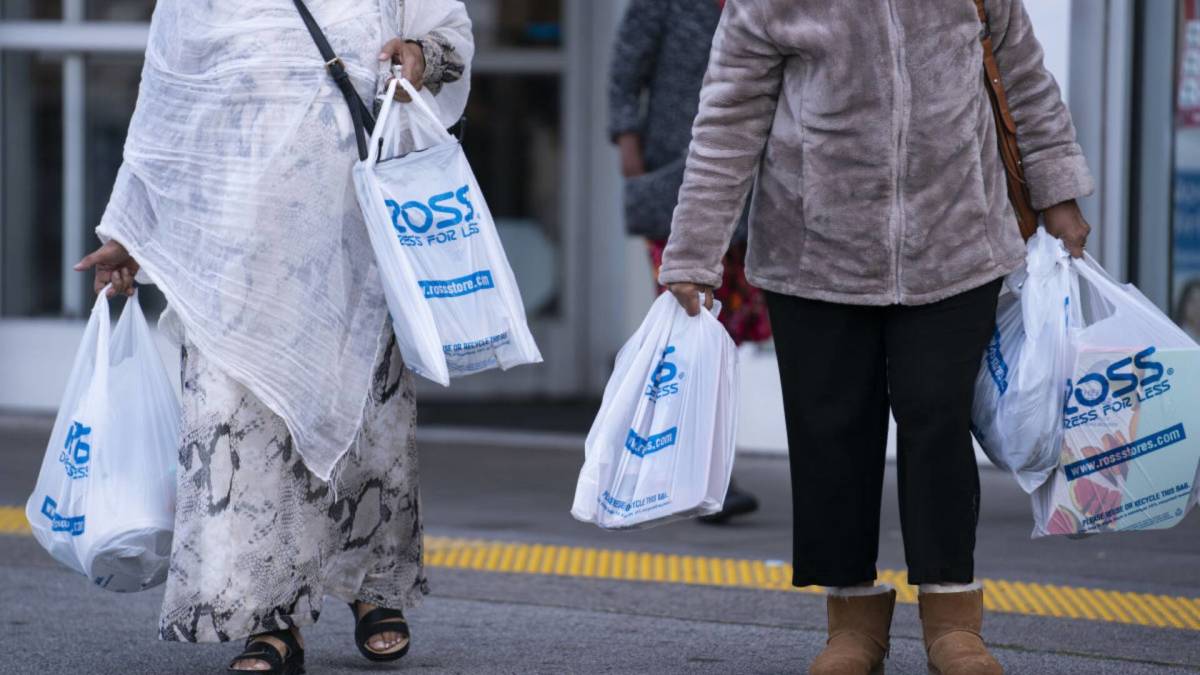Ross Dress for Less (ROST) is starting to feel the impact of a major policy change the Trump administration has been rolling out over the past few months.
Earlier this year, President Donald Trump announced tariffs (taxes companies pay to import goods from overseas) on multiple countries to boost manufacturing in the U.S., which may cause companies to hike prices for everyday goods.
Shortly after this announcement, Ross Stores Chief Operating Officer Michael Hartshorn said during an earnings call in May that the company would have to raise prices in its stores in June and July to offset the increased costs it would face from tariffs.
Related: Walmart makes drastic move to keep customers from fleeing stores
“We want to be very careful with price increases,” said Hartshorn. “We don’t want to be the first one to raise prices, and we want to make sure that we keep our value or pricing umbrella versus mainstream retail.”
Despite recent price increases, Ross’ comparable store sales increased by 2% year-over-year during the second quarter of this year, according to its latest earnings report. Also, recent data from Placer.ai found that customer visits in stores spiked by 5.8% during the quarter.
Even though Ross recently experienced higher levels of foot traffic and sales, its operating income dipped by roughly 3% year-over-year, mainly due to tariff-related costs.

Image source: Silbiger/Bloomberg via Getty Images
Ross plans a harsh decision that may frustrate customers
During an earnings call on Aug. 21, Ross CEO James Conroy said that the company has been working “tirelessly” to lessen the impact of tariffs.
“While tariffs remain at elevated levels, we feel good about the progress the merchants have made to mitigate the impact on margin,” said Conroy. “The team has worked tirelessly to execute a multipronged approach, including vendor negotiations, diversifying our sourcing mix, and adjusting prices strategically. Additionally, we were able to expand the portion of our business driven by closeouts, which further mitigated the impact.”
Also, during the call, Ross Chief Operating Officer Michael Hartshorn didn’t rule out the company implementing additional price increases in stores over the next few months, especially since higher tariff rates went into effect Aug. 7.
He said the company will be “cautious” when deciding when and where to adjust prices.
Related: Lowe’s struggles to fix a concerning customer problem
“In some places, we’ll move along and raise prices, test it, see how the customer reacts,” said Hartshorn. “In other places, we may give more value. So it really is an area-by-area decision by the merchant, but if prices go up, it gives us the flexibility to follow for sure.”
Conroy said Ross expects “modest pressure” from tariffs during the third quarter, but is confident that it will be “further mitigated” during the last few months of the year.
“We are beginning to see higher prices across the retail industry,” said Conroy. “With this backdrop, we are focused on maintaining our value proposition relative to traditional retailers, while balancing the opportunity to preserve our merchandise margin.”
Consumers are changing their tune amid economic concerns
Ross’ plan to increase prices in stores comes during a time when many consumers are drastically changing their shopping habits to save money due to Trump’s tariffs.
A recent report from market research company Wunderkind found that 58% of consumers “feel cautious, pessimistic, or panicked about the economy.”
These worries have prompted 35% of consumers to search for more deals while shopping. Also, 31% are buying fewer nonessential items, and 31% are shopping less overall.
Related: Target stores will soon undergo big changes as shoppers pull back
While retail sales across the U.S. increased by 0.5% in July, according to recent data from the U.S. Census Bureau, consumer sentiment declined by 5% at the beginning of August, the first decline in four months, according to University of Michigan data.
“The consumer looks mixed so far in the third quarter,” said Comerica Bank Chief Economist Bill Adams in a statement to TheStreet. “Retail sales rose solidly in July, with upward revisions to June, but consumer sentiment fell in early August on the latest tariff hikes.”
Despite this startling change, he expects the economy to continue growing for the rest of the year.
“What consumers do is more important to the economy than what they say,” said Adams. “Begrudging growth of consumer spending will keep the economy expanding in the second half of 2025, though likely at a below-trend pace.”
Ross has a plan to keep sales growing
As consumers grow cautious about their spending, Ross is planning to boost its sales through a series of “store refreshes,” which include cosmetic repairs, upgrades in signage and the addition of more workers in stores.
More Retail:
- Target has another big problem amid alarming customer behavior
- Dollar General announces big store change to win back customers
- Amazon pulls the plug on a free service for customers
Ross has also been testing out self-checkout kiosks in stores, which it plans to expand to “high-volume” locations next year.
“We’ve been piloting self-checkout,” said Hartshorn during the earnings call. “We have that in about 80 stores today, and that’s been very successful for us. We’ve been able to the customer has really enjoyed the experience, it’s allowed us to reduce line lengths and we’ve been able to control the shortage.”
#Ross #Stores #plans #harsh #change #shoppers #notice #stores